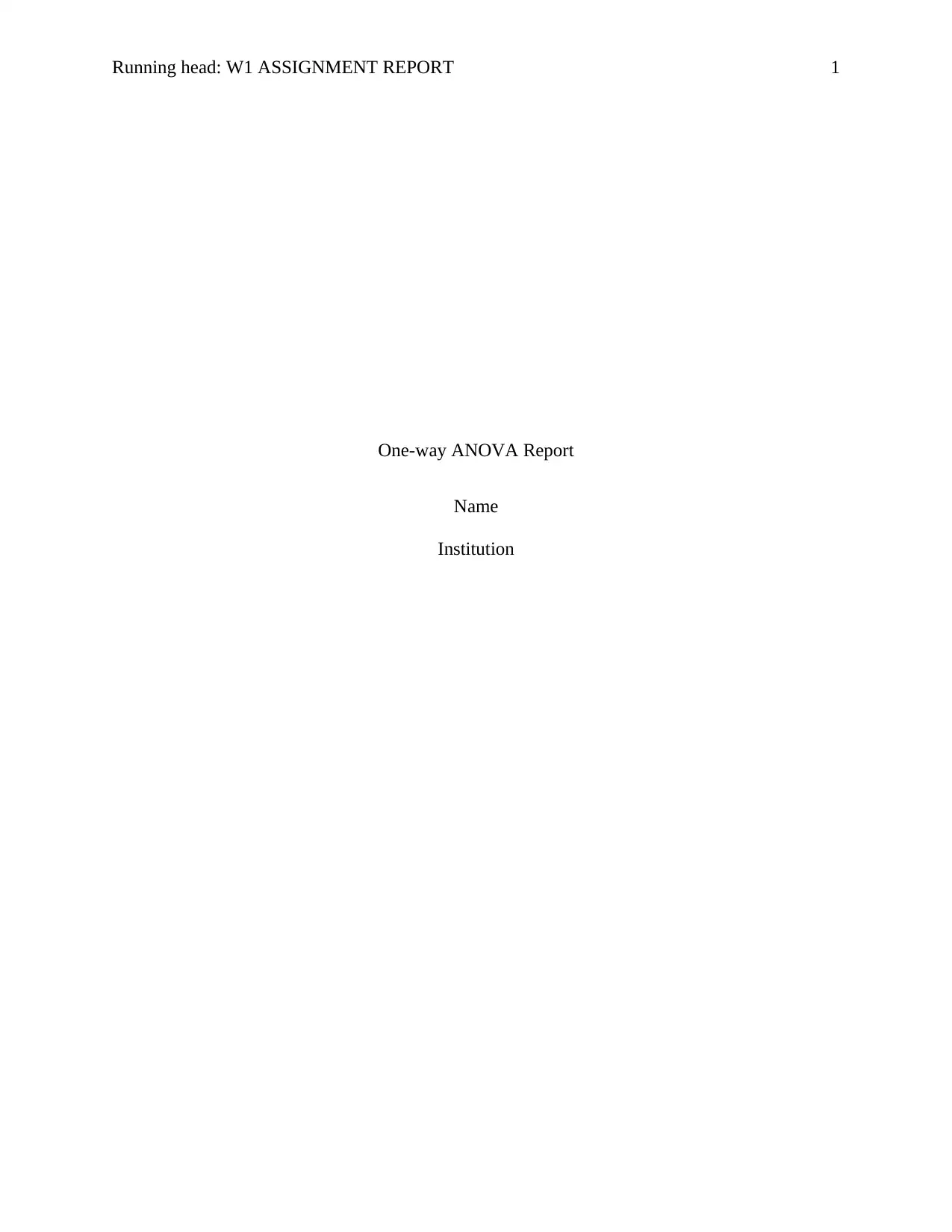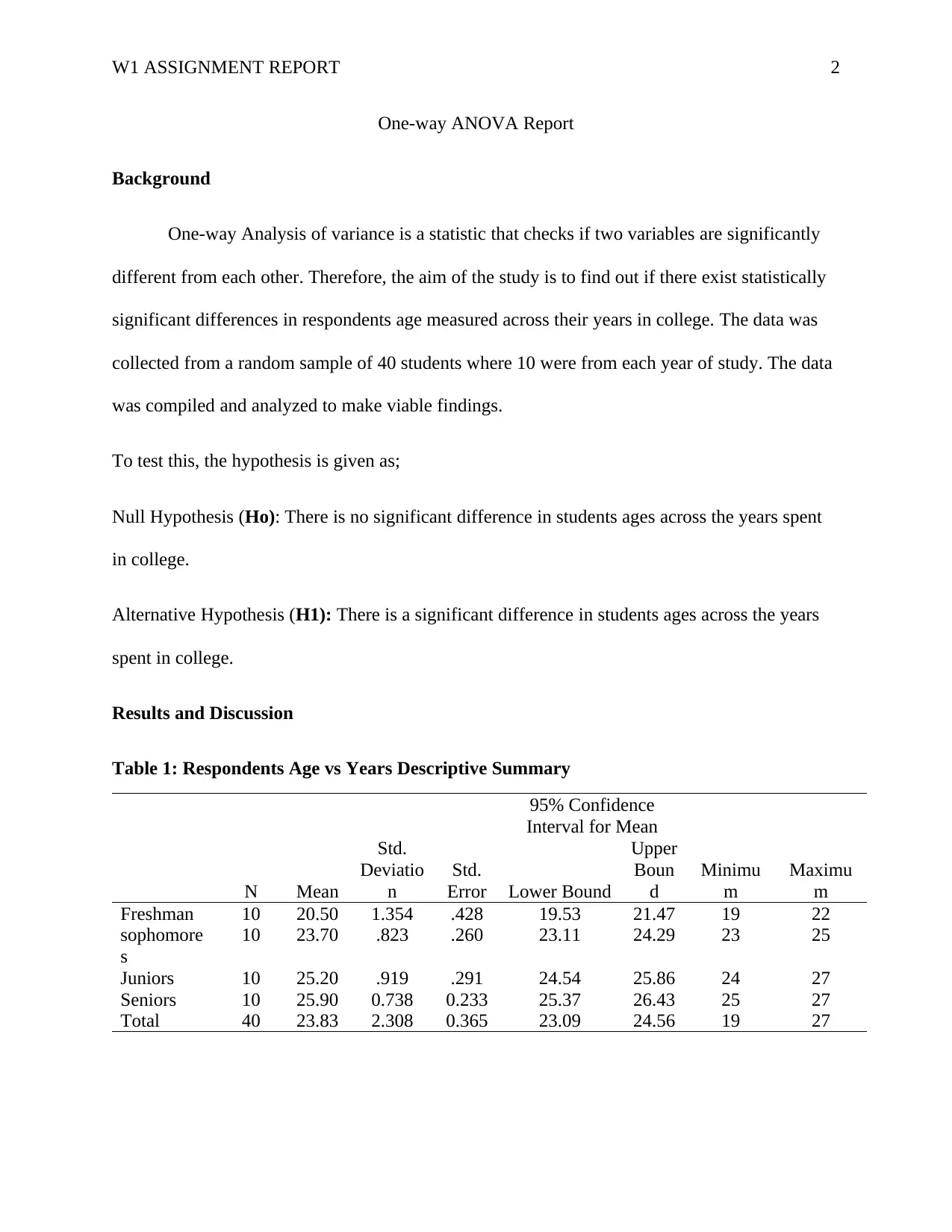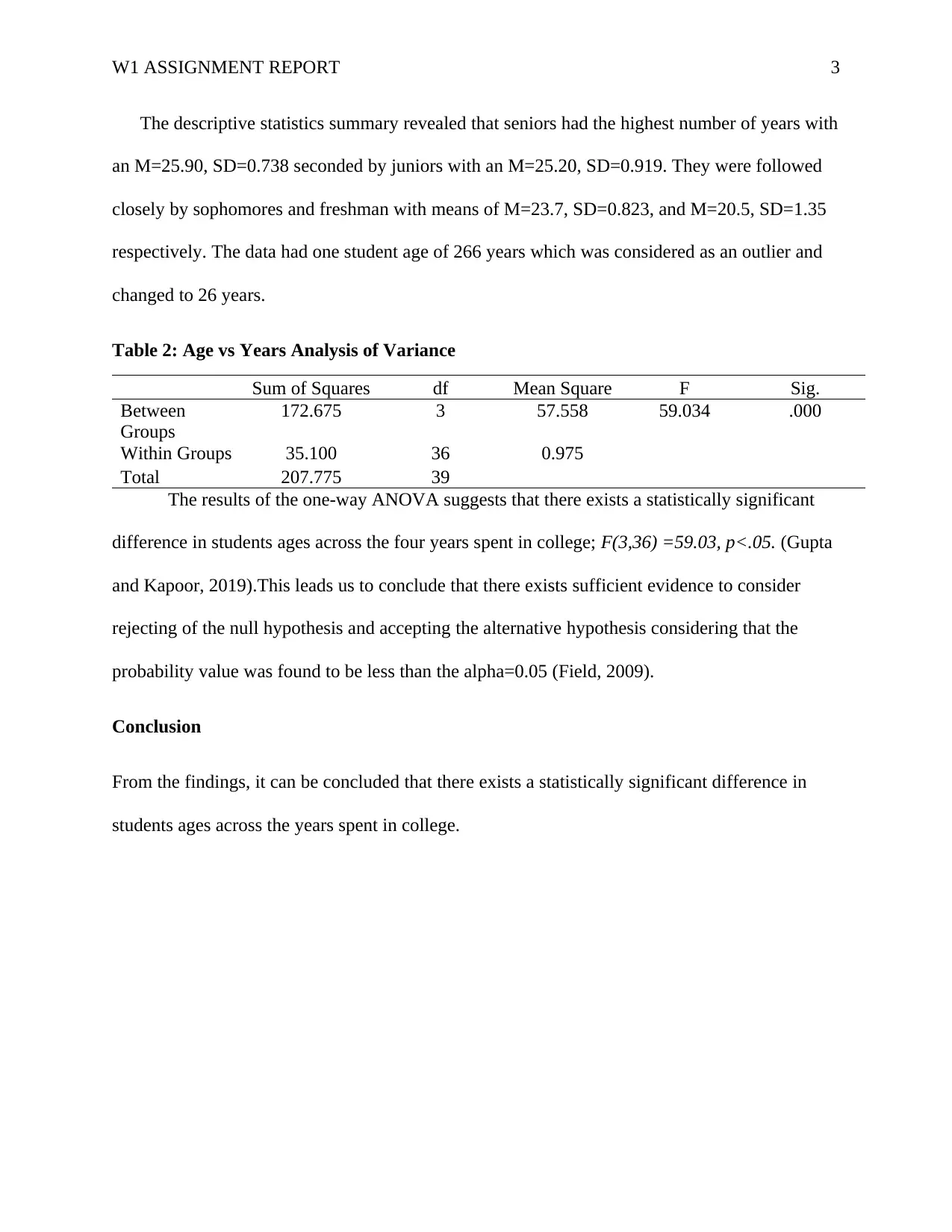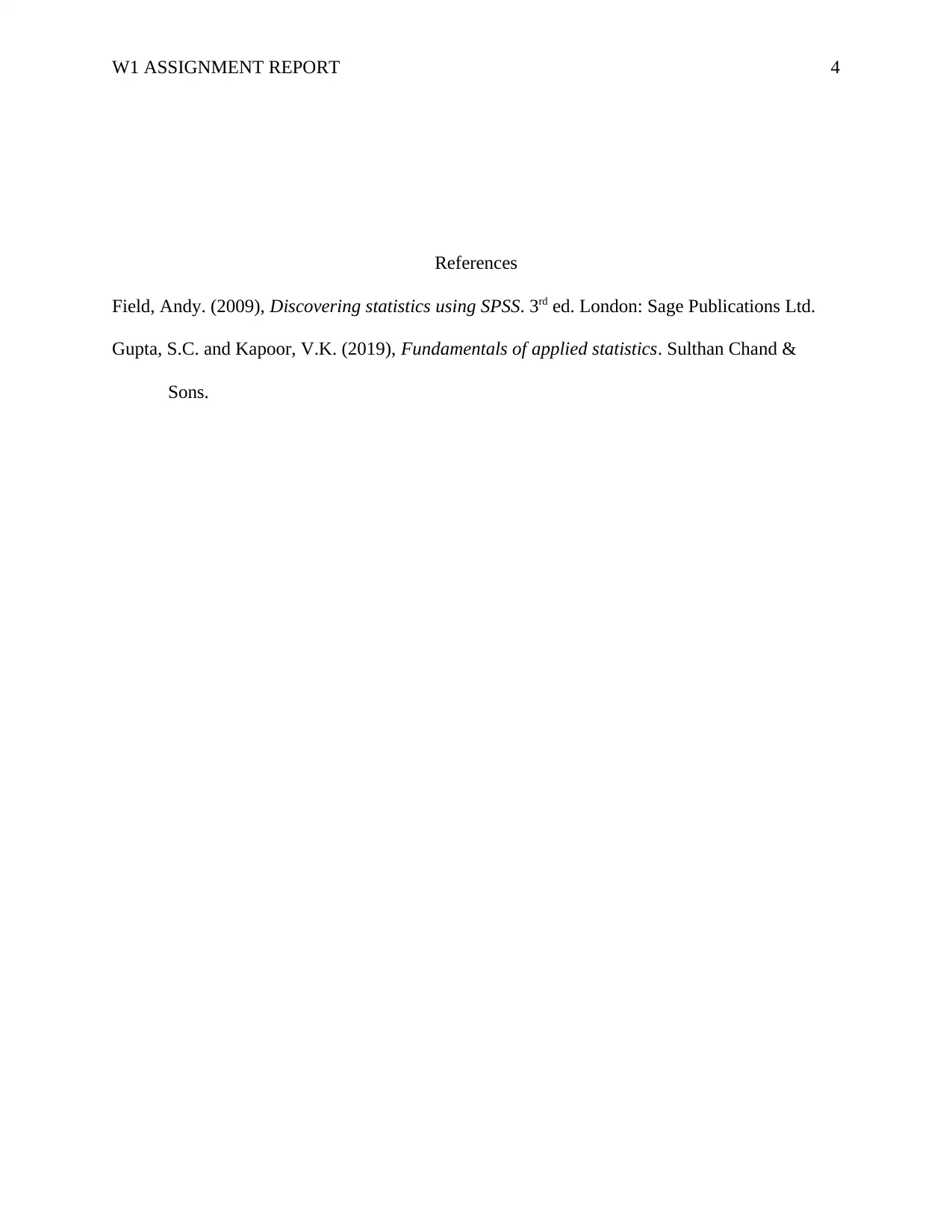One-Way ANOVA Report: Analysis of Student Ages in College
VerifiedAdded on 2023/03/23
|4
|494
|66
Report
AI Summary
This report presents the findings of a one-way ANOVA analysis conducted to determine if there are statistically significant differences in student ages across their years in college. The study involved a random sample of 40 students, with 10 from each year of study (freshman, sophomore, junior, and senior). The report includes descriptive statistics, such as means and standard deviations, for each year group. The analysis revealed a statistically significant difference in student ages across the four years (F(3,36) = 59.03, p < .05), leading to the rejection of the null hypothesis. The conclusion indicates that there is sufficient evidence to support the alternative hypothesis, suggesting that student age varies significantly depending on their year in college. The report includes tables summarizing the data and references supporting the statistical methods and findings.
1 out of 4






![[object Object]](/_next/static/media/star-bottom.7253800d.svg)